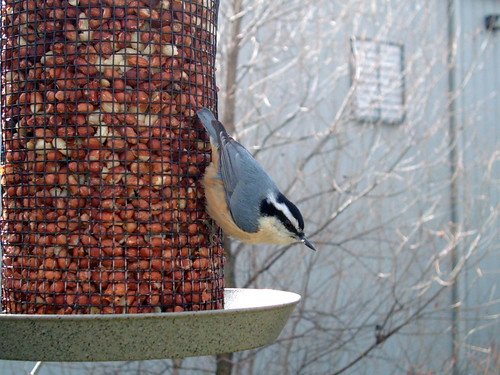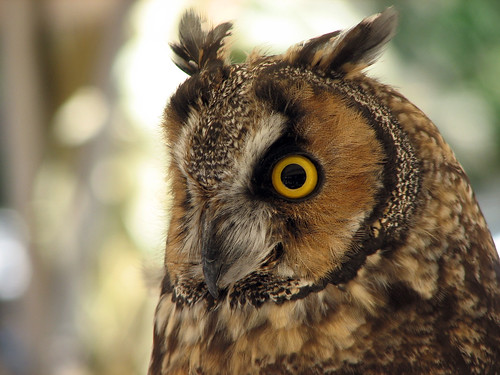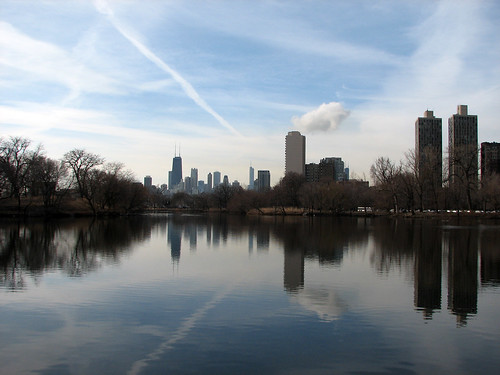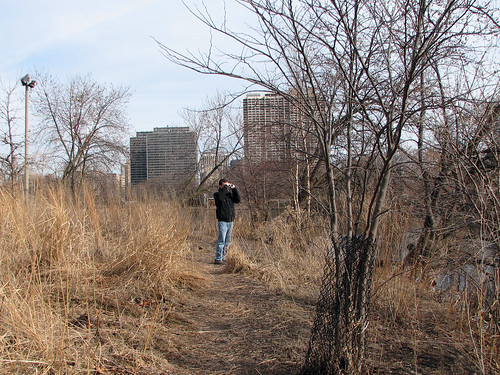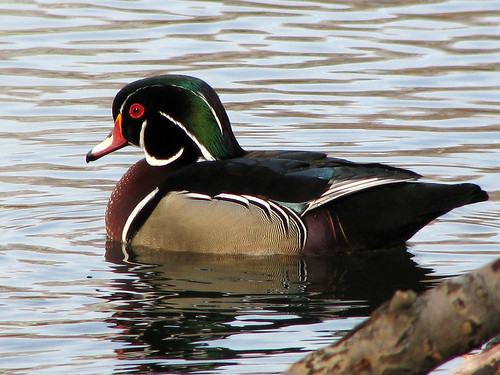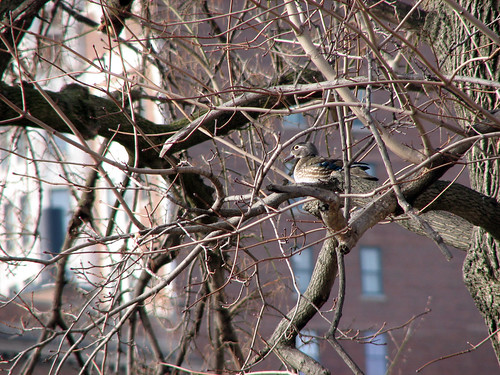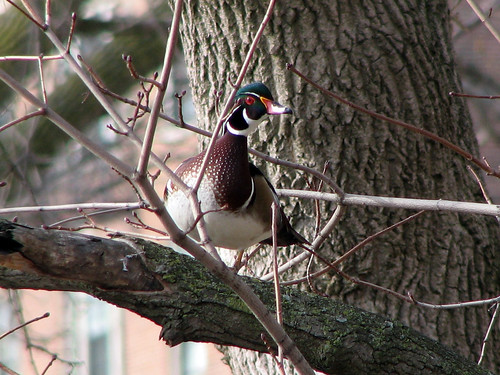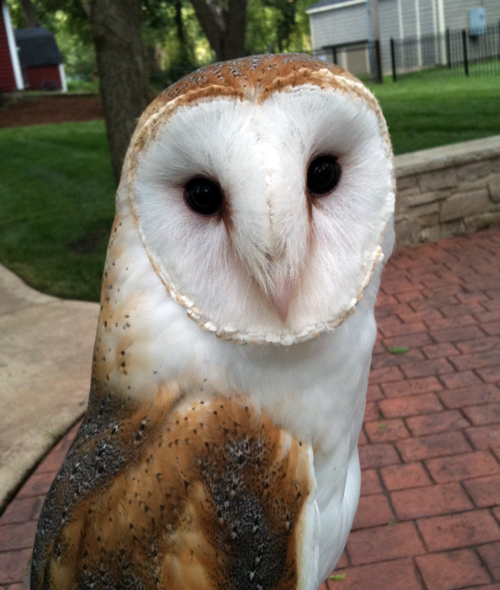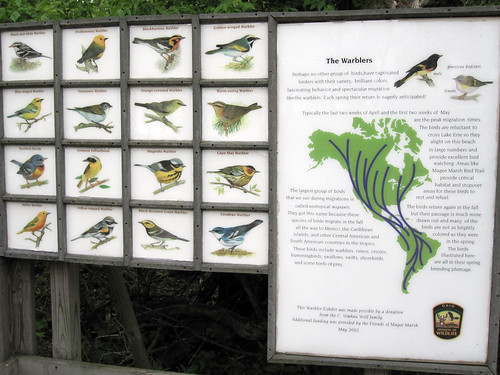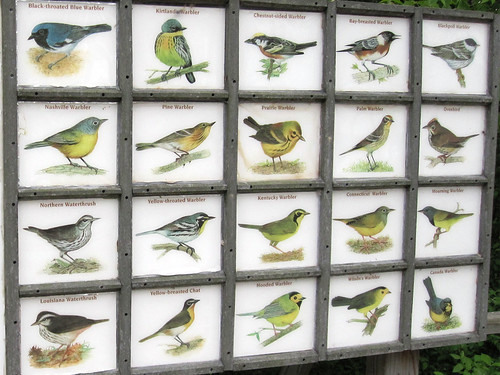Release rewards
I’ve been volunteering at the Audubon Center for Birds of Prey since early February. Being able to help birds in need is wonderful. Being given the responsibility to release rehabilitated birds back into the wild is even more special, and exhilarating. In the last couple of weeks I’ve had the opportunity to release a few successfully rehabilitated birds back into the wild.
On June 28th, a lot of birds were ready for release. During my volunteer shift I assisted while other volunteers and staff caught up birds, including several Eastern Screech Owls. Two EASOs were due to be released in Deltona, and since that’s not too far from my home, I took them. When the time came for release, one bird took off like a shot. I was holding the box, but I blinked and missed it leaving! I felt a woosh but it wasn’t until I looked down in the box and saw just one owl that I knew one had gone. Silent flight, indeed! The second bird needed just a bit of encouragement to regain its freedom. It was a successful first release experience with ACBOP.
On July 12th I came in for my volunteer shift and found out that a couple of birds were ready to be released in my area. Between cleaning and other regular volunteer duties, I helped a bit with shuffling birds from rehab mews to flight chambers and preparing healed birds for release or transfer. This included a young Osprey to be released in DeBary, and a Barred Owl to be released in Deland.
Both releases were fantastic. In each case I contacted the party that originally found the injured raptor and was responsible for getting it to the Center for treatment.
The whole family came out for the after-dusk release of the Barred Owl, who was found in the middle of the road and was presumably struck by a car. The owl’s recovery took several weeks. The release went flawlessly! She flew out of the box and straight up into a tree, resting and taking in her surroundings. Since this release was done after dusk, light was too poor to capture any images.
The Osprey was released earlier in the afternoon at Lake Monroe Park in DeBary, and Arthur took some great photos of the action.

A quick look around just as the box was opened
There are at least two active Osprey nests at Lake Monroe Park. This is the park at the end of the Spring-to-spring Trail, so its a spot I know well. The young Osprey had been found on the ground just under a week prior to her release – she was caught up in Spanish Moss(!). The young bird was strong and healthy – just a little bit klutzy to get so caught up in the moss as to require rescue.

Stretch and go!
After being monitored in a flight chamber, it was time to release her back where she came from. We released her close to her nest, but on the far side of a gravel driveway in order to give her a nice long “runway” for takeoff.
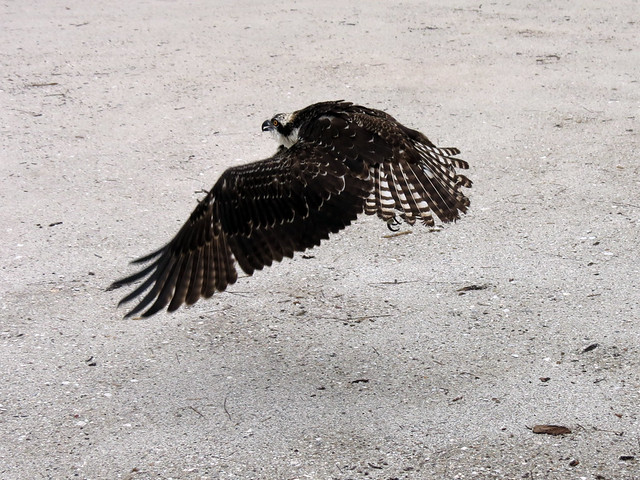
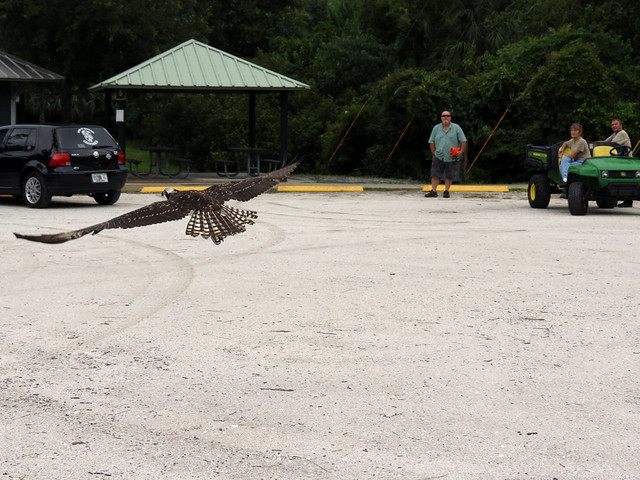
The release was attended by the rescuer, who stood close to me as I opened the box, as well as two interested park employees and one park visitor, seen in the above photo.
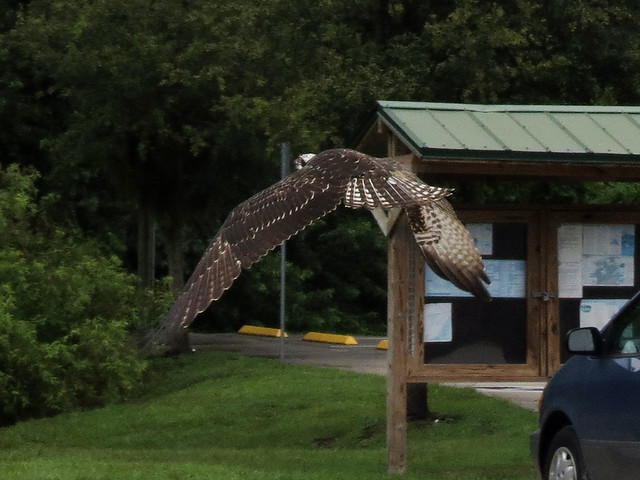

As you can tell, she was eager and ready to go! She leaped out of her box and flew right to her nest. In the below photo it looks like she’s making a beeline – the nest is top center. She veered right and flew a wide circle around the nest, eventually approaching from behind. A parent and sibling were in the area and began to vocalize as soon as our girl was airborne.

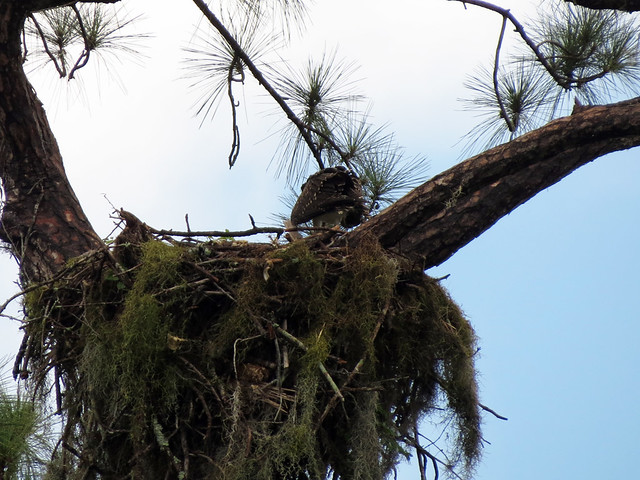
Home at last!
The Audubon Center for Birds of Prey, located in Maitland, Florida, treats up to 700 birds of prey each year. You can follow them on Facebook here. This post reflects my own experiences as a volunteer; any errors regarding the Center and their patients or permanent residents are purely my own. Further, any opinions expressed here do not necessarily reflect those of ACBOP.



